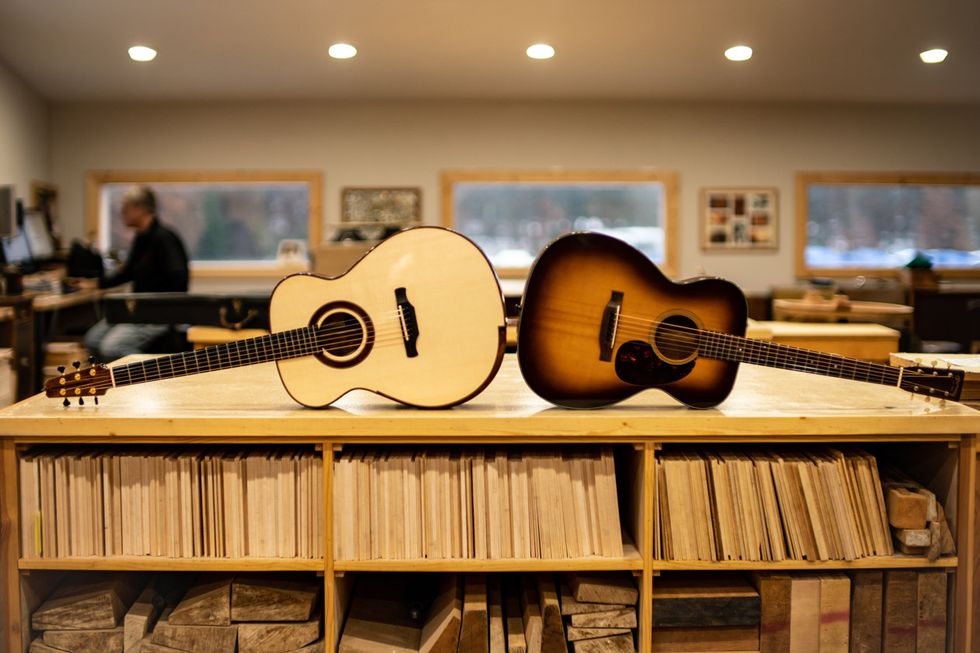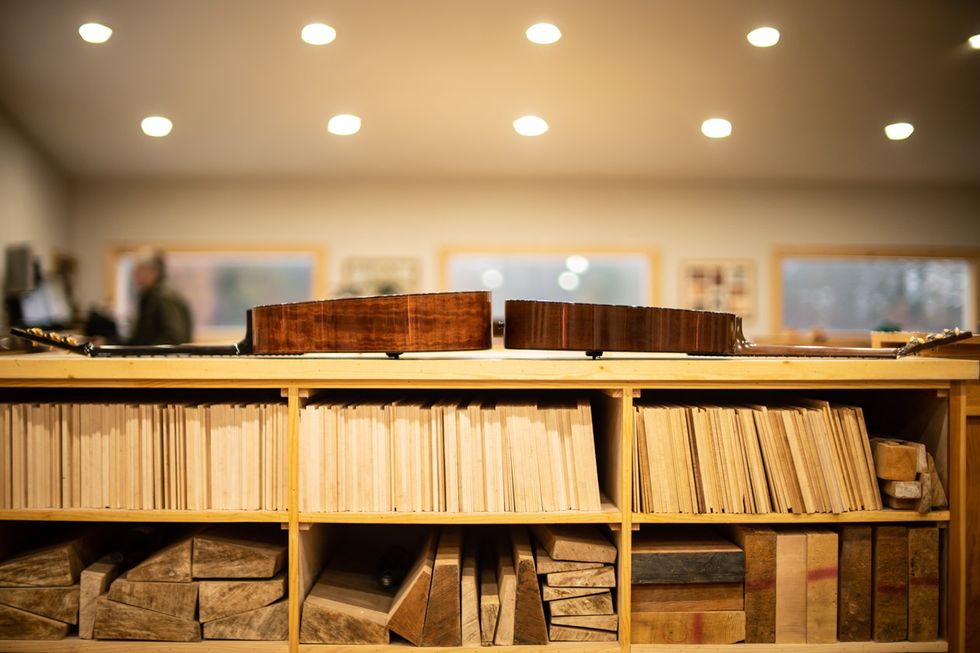In my previous column [“The Name Game,” December 2018], we talked about tonewoods and how they might affect both the sound and longevity of an instrument. I also stressed the importance of understanding their material qualities, to help avoid the hype generally associated with tonewoods. We will definitely be revisiting these topics, but we should first look at how body sizes and their resonances affect the sound of an instrument. Once you have a better idea of what you are dealing with, you can make better choices to suit your playing style.
Guitarists often find themselves attracted to certain body sizes because they seem to fit their playing style. This isn’t just coincidence. Body size and shape play a role in the sound of an instrument by affecting its resonant frequencies. And a guitar’s resonant frequencies act somewhat like a notch filter that boosts output in the frequency range in which they are active.
The guitar has three main low-frequency resonances: the air resonance, the top resonance, and the back resonance. Large, deep-bodied guitars put the emphasis on the lower end. Smaller, shallower guitars have less low-end response, which makes their lows tighter and more defined. This doesn’t mean the smaller guitars have less volume. They are in fact the same volume within their resonant range, but just can’t pump the bottom.
Body sizes are commonly referred to in terms used by well-known instruments, like the Martin dreadnought and OM (orchestra model), or, for you Gibson lovers, it’s the Jumbo and L-00. When looking for low-resonance body styles or instruments with a big bottom, people are generally drawn to guitars in the vein of Martin dreadnoughts or Gibson Jumbos. Yes, larger guitars have been made, but these two models define what players prefer for that big, acoustic sound. In the case of the dreadnought, its 15.75" bout and deep sides lower the air resonance to around 95 Hz, while the Gibson’s full 16" bout can drop the resonance below 90 Hz for its classic boom. This is why some players like the Martin for its more-defined low end, while others prefer the Gibson for its smoother, lusher bottom.
Mid-resonant body styles such as the Martin OM and the Gibson L-00 are smaller in width and depth, resulting in higher resonant frequencies—with air resonances ranging between 100 Hz to 115 Hz. Their slightly higher resonances are preferred by fingerstyle players for excellent separation of notes and tonal balance.
The Guidry (left) shows deeper sides and a wider bout when compared to the Martin, which is a common design many modern boutique fingerstyle guitarmakers use to boost low-end frequencies.
Even higher-resonance guitars—commonly known as parlor guitars—achieve air resonances ranging between 110 Hz to 125 Hz. While their bass response is limited, the clarity is unique and defined. No, a parlor guitar probably wouldn’t be your first choice if you’re limited to just one guitar, but many players have parlors in their collection to round out their sound.
On the other hand, the Gibson J-185, for example, is a model that bridges the gap between jumbos and OMs. Its shape is the same as a J-200, but it’s sized down from 17" to 16" at the bout, which kind of makes it the J-200’s little brother. Between the Martin OM and the Gibson J-185, these two models inspired the modern fingerstyle boutique market. For one example, our senior builder Sam Guidry pulled inspiration from both models in designing his SG-2 guitar. When it’s viewed next to a Martin 000-18 [Photo 1], one can see that even though the SG-2 model was designed deeper to lower the air resonance, the body styles have a similar footprint.
What seems to be true with all makers, big or small, is that while they might play around with the subtleties of the shape, in the end it’s the air resonance that separates the classes between a jumbo, OM, and parlor. When you understand there are defined, measurable differences between body styles, it helps you appreciate why certain classes of guitar are so prominent, and why they have earned their place in the market.














![Rig Rundown: Russian Circles’ Mike Sullivan [2025]](https://www.premierguitar.com/media-library/youtube.jpg?id=62303631&width=1245&height=700&quality=70&coordinates=0%2C0%2C0%2C0)





